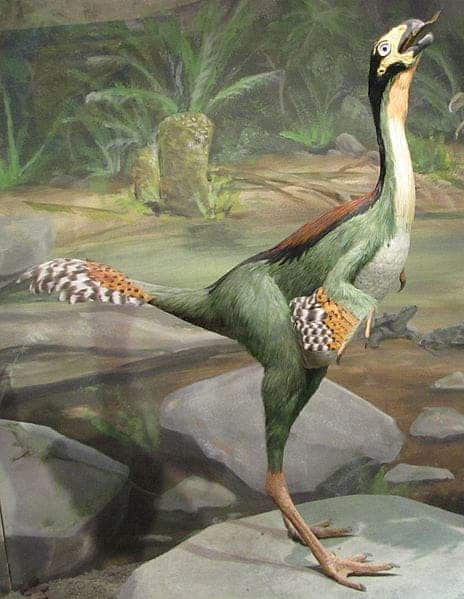Flying is a pretty nifty way of moving around very fast. New research is looking into the dinosaurs’ earliest attempts at flight, an effort which ultimately led to the birds of today.

Image credits Christophe Hendrickx.
Two-legged dinosaurs likely started dabbling in active flight while running, new research reveals. The findings provide new insight into how these reptiles evolved the ability to fly, a debate that’s been raging ever since 1861 and the discovery of Archaeopteryx. The results point to an alternative evolutionary path that didn’t rely on an intermediate gliding phase, suggesting that the two types of flight have different origins.
Dinos of a feather flap their wings together
“Our work shows that the motion of flapping feathered wings was developed passively and naturally as the dinosaur ran on the ground,” says lead author Jing-Shan Zhao of Tsinghua University, Beijing. “Although this flapping motion could not lift the dinosaur into the air at that time, the motion of flapping wings may have developed earlier than gliding.”
To the best of our knowledge, dinosaurs perfected gliding-type flight much earlier than active flight. The sensible assumption, then, would be that active flight developed from gliding — the two are very similar, mechanically. However, Zhao and his colleagues weren’t convinced. The team studied Caudipteryx, the most primitive non-flying dinosaur known to have had feathered “proto-wings.” It weighed around 5 kilograms, very little for a dinosaur, and looked like a miniature, feathered, beaked T-Rex.
The first part of the research revolved around understanding how Caudipteryx moved about. Using a mathematical approach called modal effective mass theory, the team looked at how the various parts of this dinosaur’s body fared during running, how they moved, and what mechanical forces they were subjected to. From these calculations, the team estimates that running speeds between about 2.5 to 5.8 meters per second would have created forced vibrations that caused the Caudipteryx’s wings to flap. So far, so good — previous research has estimated that Caudipteryx could reach running speeds of up to 8 meters per second, so it could easily achieve the speed interval calculated by the team.

Image credits Talori et al., (2019), PLOS.
Then came the fun part: in order to check their results, the team constructed a life-sized robot Caudipteryx and made it run at different speeds. This step confirmed the initial findings — running motions in the 2.5 to 5.8 meter per second range caused a flapping motion of the wings. To double-double check the results, the team also fitted artificial wings on a young ostrich. Here too, running caused the wings to flap. Longer and larger wings providing a greater lift force, the team notes.
So the first part of this hypothesis seems to pan out. Zhao says that the next step is to analyze the lift and thrust of Caudipteryx’s feathered wings during the passive flapping process, to see if the animal could actually sustain flight over meaningful distances, or just tended to hop around.
The paper “Identification of avian flapping motion from non-volant winged dinosaurs based on modal effective mass analysis” has been published in the journal PLOS Computational Biology.






